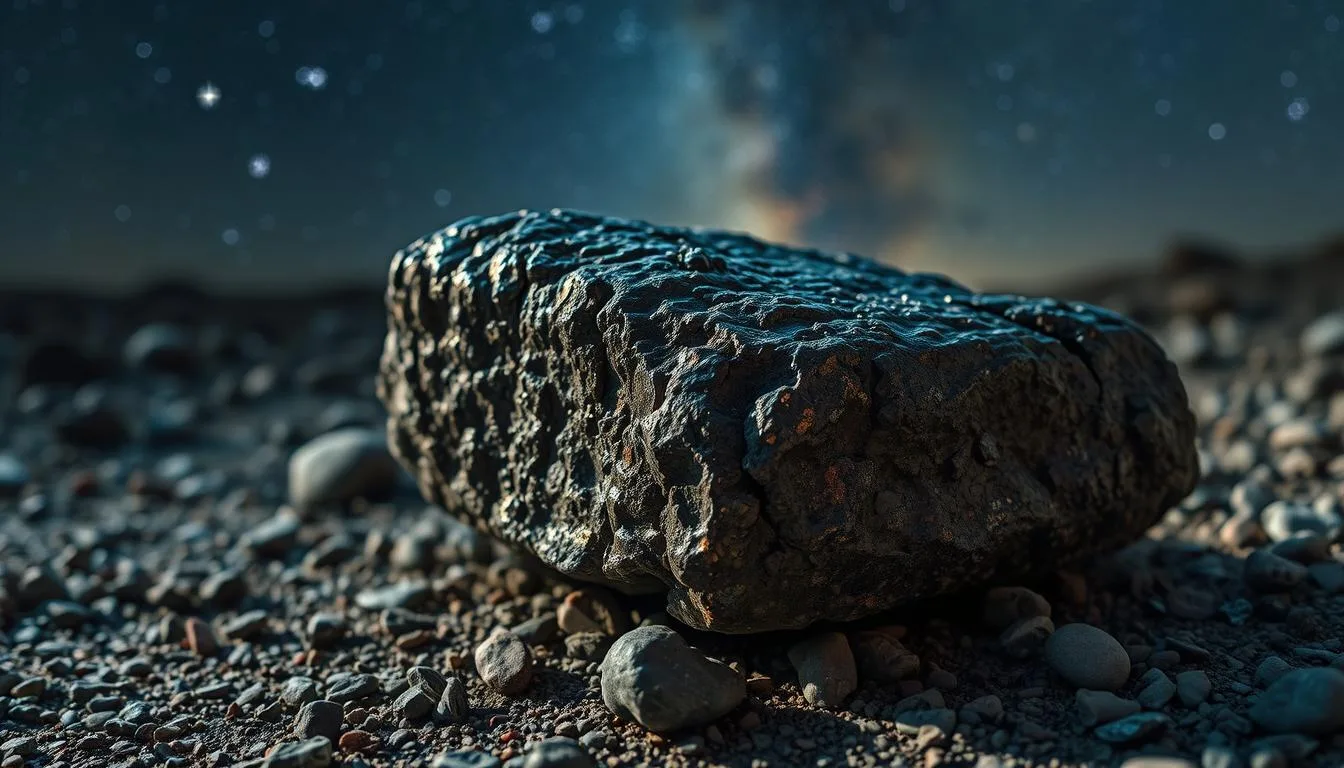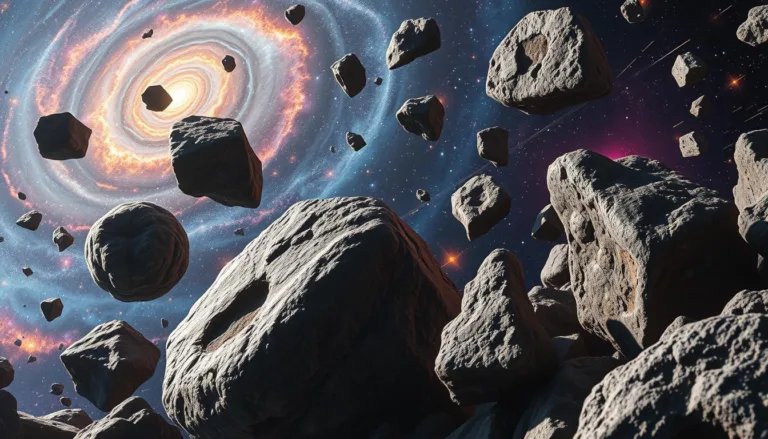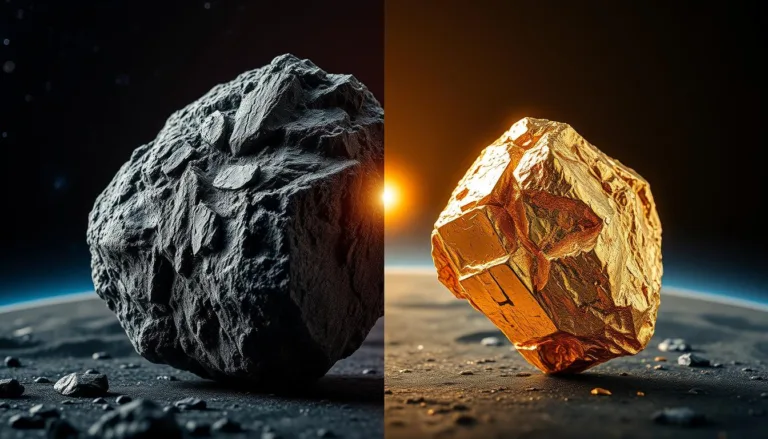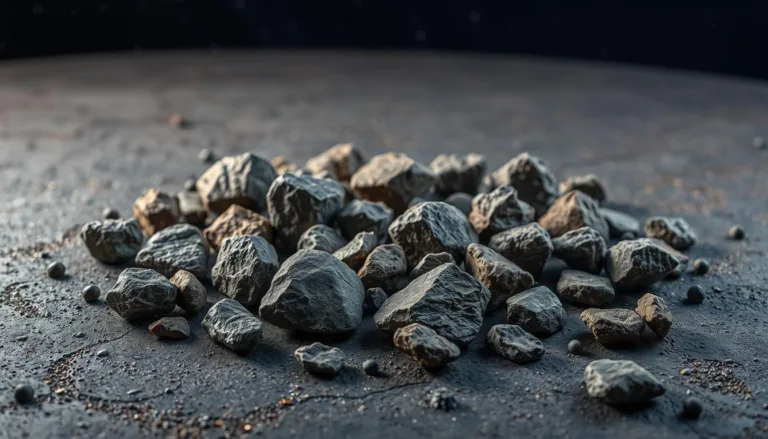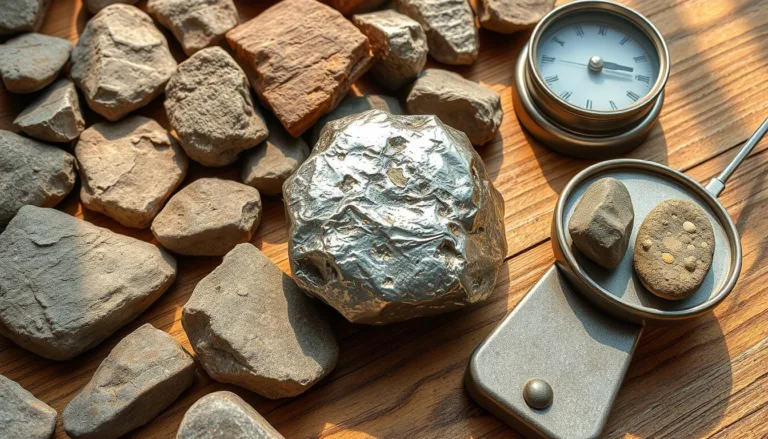Imagine finding a piece of the universe, a real part of a distant world that traveled millions of miles to Earth. This is the excitement that meteorite hunters feel when they find these rare space rocks. Meteorites are bits of asteroids, comets, or other space objects that made it through Earth’s atmosphere and landed here. But how often do we find these amazing pieces of the universe?
Key Takeaways
- Meteorites are incredibly rare, with only a few thousand recovered worldwide each year.
- The chance of finding a meteorite depends on various factors, including geographic location, population density, and environmental conditions.
- Meteorite hunting requires specialized knowledge, equipment, and techniques to identify and properly document these precious space rocks.
- Discovering a meteorite can be a thrilling experience, offering insights into the formation and composition of our solar system.
- Meteorite finds have significant scientific and monetary value, making them highly sought after by researchers and collectors alike.
Understanding Meteorites: From Space to Earth
Meteorites are amazing pieces of space debris that have caught the attention of many. They come from our solar system and give us a peek into how our planet and others formed. These fragments are like windows into the past of our universe.
Different Types of Meteorites
Meteorites vary in size and origin. Some are pieces of asteroid fragments, while others come from the early days of our solar system. They can be small stones or huge boulders, surviving the intense heat of entering Earth’s atmosphere.
The Journey Through Earth’s Atmosphere
Shooting stars are actually meteorites burning up in our atmosphere. They travel at incredible speeds, getting hotter and hotter. This heat changes their look, revealing what they’ve been like for millions of years.
Identifying True Meteorites from Earth Rocks
Telling meteorites apart from Earth rocks is tricky. Meteorites have special features like a fusion crust and certain minerals. Scientists use tests to confirm if a rock is from space.
Exploring meteorites helps us learn about our solar system’s history. They show us the amazing journey of space debris and offer a glimpse into the universe beyond our planet.
How Rare Is It to Find a Meteorite?
Finding a meteorite is a rare and amazing event. These objects come from space and rarely survive the Earth’s atmosphere. Even fewer are found by people.
There are about 60,000 confirmed meteorites on Earth, with new ones found each year. Given the planet’s size and age, this number seems very low. Experts think there are hundreds or thousands of meteorites that go unnoticed, either in remote areas or mistaken for regular rocks.
- The chances of seeing a meteor shower and finding a meteorite are about 1 in 100,000.
- Finding a meteorite that hits a person is even rarer, with odds of 1 in 1.6 million.
These numbers show how special it is to find a meteorite. For those who hunt for them, the excitement of the search is worth it. But remember, finding one takes patience and a lot of effort.

Factors Affecting Meteorite Discovery
Finding space rocks and cosmic debris is exciting. Yet, finding a meteorite depends on several factors. Knowing these can help us understand why they are rare and where they are found.
Geographical Distribution of Meteorite Falls
Where meteorites fall is key to finding them. Places like deserts and Antarctica are rich in meteorites. This is because of their clear skies and unique landscapes. These areas make it easier to spot and study space rocks.
Weather and Environmental Impact
Weather and the environment also matter. Places with clear skies and little vegetation are best for finding meteorites. But, areas with lots of plants, rain, or rough terrain are harder to search.
Population Density and Reporting
How many people live in an area affects meteorite sightings. Places with more people are more likely to have someone see and report a meteorite. But, areas with fewer people might have fewer reports.
| Factor | Impact on Meteorite Discovery |
|---|---|
| Geographical Distribution | Certain regions, like deserts and Antarctica, are more favorable for meteorite discovery due to their atmospheric and geological characteristics. |
| Weather and Environment | Clear skies, minimal vegetation, and stable ground surfaces make it easier to spot and recover meteorites upon impact. |
| Population Density | Higher population areas increase the likelihood of meteorite sightings being reported and documented. |
Best Locations for Meteorite Hunting
If you’re eager to join the ranks of intrepid meteorite hunters, you’ll find several prime locations worldwide. These areas offer exceptional opportunities to uncover these captivating celestial objects. From vast desert expanses to frozen polar landscapes, these places provide the ideal conditions for finding meteorite fragments.
The Sahara Desert in North Africa is a renowned hotspot for meteorite hunting. Its dry, arid climate and dark-colored rocks make it easier to spot asteroid fragments. The southwestern United States, including the Mojave and Sonoran Deserts, has also yielded many meteorite finds.
Another prime location is Antarctica’s frozen terrain. The ice fields and glaciers protect celestial objects from the elements. This makes them more identifiable on the stark, white landscape.
Certain regions with high population densities, like the Midwestern United States, are also fruitful for meteorite enthusiasts. The increased number of observers in these areas boosts the chances of reports and discoveries.

Whether you venture into the Sahara, brave Antarctica’s frozen landscapes, or explore the Midwest, the thrill is unmatched. With the right knowledge, equipment, and a keen eye, you can join the ranks of dedicated meteorite hunters. You’ll uncover the secrets of the celestial world.
Tools and Techniques for Meteorite Detection
Exploring the cosmos starts with the right tools and methods for finding meteorites. Meteorite hunters use various tools and scientific methods. These help them find rare space rocks that have amazed us for centuries.
Essential Equipment for Hunters
Meteorite hunting needs a sharp eye and the right tools. You’ll need a strong magnet to find metallic meteorites. A notebook and pen are for documenting your finds. A GPS is for marking where you found them.
Don’t forget sturdy boots, a wide-brimmed hat, and sun protection. These are key for exploring the rough terrain where meteorites might be found.
Scientific Methods of Identification
For those who want to confirm their finds, scientific analysis is next. Experts use X-ray fluorescence and thin-section analysis. These methods check the chemical makeup and structure of the meteorites.
They not only prove the meteorite’s authenticity but also tell us about its origins in space.
Documentation and Recording Finds
It’s important to document and record meteorite finds well. Hunters should note the date, location, size, and any special features. This information helps scientists understand these celestial visitors better.
By sharing this data with meteorite databases and research groups, we learn more about these rare and fascinating objects from space.
“The search for meteorites is not just a hobby; it’s a way to unravel the mysteries of our solar system and the universe beyond.”
The Value of Meteorite Discoveries
Meteorites are fascinating pieces of extraterrestrial materials, cosmic debris, and asteroid fragments. They are very important to science, business, and culture. These pieces from space give us a rare look into our solar system’s past.
From a scientific view, meteorites tell us a lot about how planets and moons formed. By studying their makeup, we learn about the universe’s early days. This helps us understand how our planet came to be.
“Meteorites are like time capsules from the birth of our solar system, containing information that can help us better understand the conditions and events that led to the formation of Earth and the other planets.”
In the business world, meteorites are highly valued because they are rare. The most special ones can cost a lot of money. This has made a big market for people who collect and invest in meteorites.
Meteorites also spark creativity and interest in people. They have inspired art and culture for centuries. Today, they are found in museums and private collections, showing our ongoing interest in space.
The search for extraterrestrial materials, cosmic debris, and asteroid fragments will keep growing. Meteorites are a special link to our past. They are important for science, business, and culture, showing their unmatched value.
Conclusion
Finding a meteorite is a rare and amazing event. These space rocks give us a peek into our solar system’s past. They fascinate scientists and the public with their journey through our atmosphere.
If you love meteorite hunting or just the cosmos, knowing how rare they are is important. Learning about where they fall, weather, and people helps us appreciate the search. It shows us the hard work and patience needed to find these treasures.
When you start hunting for meteorites, make sure you have the right tools and know-how. Always follow scientific methods to identify them correctly. Every find can reveal new secrets about our planet and the universe.

